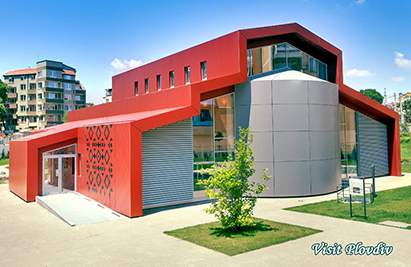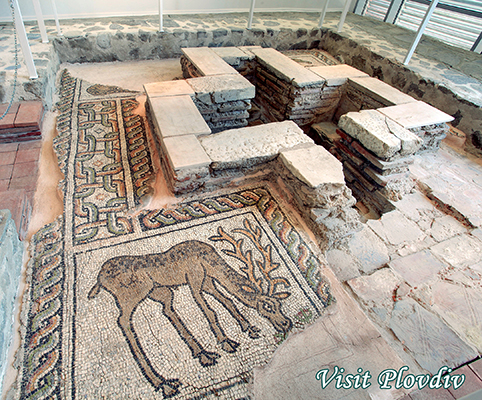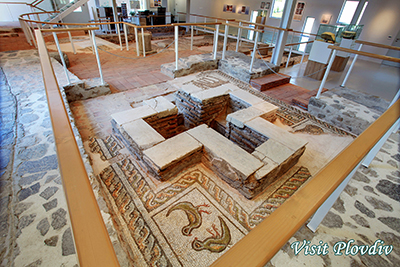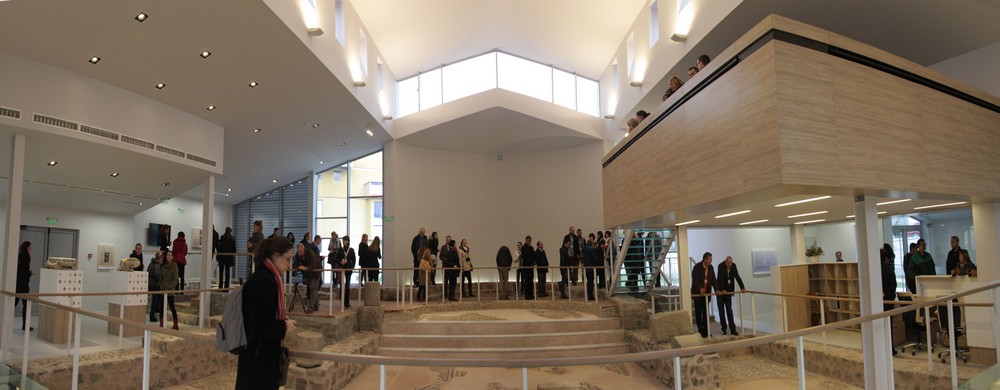The Small Earlychristian Basilica
phone: +359 876 662 882 email: [email protected] link: http://oldplovdiv.bg/en/sights/11On the territory to the East and Northeast of the Forum (Agora) of Philippopolis in the years of Early Christianity were formed neighborhoods where several Christian churches were built. In the same area were found also the ruins of a synagogue - a unique building from that period.
The ruins of the Small Early Christian basilica were found during the construction works of "Maria Louisa" Blvd. The Small basilica is situated in the eastern outskirts of the Ancient city, next to the fortification wall with a tower from 2nd - 4th century AD.
The basilica has a central nave, flanked by two aisles. It is with one apse and with a narthex. A small chapel was built to the South and a baptistery is erected just next to the Northern aisle. The overall length of the basilica, including the apse, is 20 meters, and the width is 13 meters.
The basilica was built in the second half of 5th century AD with rich architectural decorations – marble colonnades separating the aisles, marble altar wall, pulpit and synthronos. The floors were covered with rich multicolour mosaic with geometrical motifs. The mosaic includes a panel with donor inscription. Remnants of an altar table were found.
After the building had been burnt down, it was reconstructed and renovated. The outer dimensions of the building were not changed, but the floor level was raised with approximately 0.70 m. The new flooring was made of bricks. The layout of the narthex, the altar wall and the pulpit were changed and a baptistery was added next to the Northern aisle.
The baptistery had a square plan, cross pool and polychrome mosaic flooring, where Christian symbols - deer, pigeons and others - were depicted. The basilica functioned until the end of 6th century AD.
Two donor inscriptions were found during excavation works. One of them was carved on the lining marble slab from the altar of the basilica. The other was shaped in the mosaic of red tesserae on white background, just opposite to the altar apse. It mentions "patrician" and "winner", but the name was erased. Probably it was the name of Basilisk, a Byzantine Emperor in 475-476 AD, and erasing it from the mosaic shows that it was made intentionally after his dethronement.
Day for free visit: Every first Thursday of the month for students and retired people.
Visits are in compliance with the anti-epidemic measures.
















Add new comment